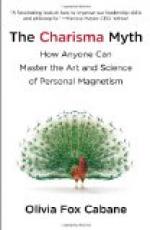From celestial phenomena the myth of the Apollo Serpent
descended to impersonate the phenomena of earth, of
which we have examples in the Greek fable of the Python,
and others. Apollo again appears as the god which
agitates and dissolves the waters, and the serpent
as the winding course of a river, and also as other
sources of water. The sun causes the river water
to evaporate, which is symbolized by the dragon’s
conflict with Apollo, and the victory of the latter.
The monster, as Forchhammer observes, is formed during
the childhood of Apollo, that is, at a time of year
when the sun has not attained his full force.
When the serpent’s body begins to putrefy, the
reptile, in mythical language, takes the new name
of Python, or he who becomes putrid. The serpent
Python, in accordance with the continual transformations
of myth, becomes the Hydra of Lerna, and Hercules,
another solar myth, is substituted for Apollo.
This Hydra is transformed again into Typhon, a fresh
personification of the forces of nature and of the
atmosphere, conspiring against heaven. The seven-headed
Hydra reappears in another form in the Rig-Veda, where
the rain cloud is compared to the serpent whom head
rests on seven springs. I have Max Mueller’s
authority for the vigorous alternation of myths in
those primitive ages, their extreme mobility, their
resolution into vivified physical forms, and the slight
consistency of specific types. Aurora and Night
are often substituted for each other, and although
in the original conception of the birth of Apollo
and Artemis they were certainly both considered to
be children of the night, Leto and Latona, yet even
so the place or island where, according to the fable,
they were born is Ortygia or Delos, or sometimes called
by both names at once. Delos means the land of
light, but Ortygia, although the name is given to
different places, is Aurora, or the land of Aurora.
(Gerhard, Griechische Mythologie.) Ortygia is
derived from Ortyx, a quail. In Sanscrit
the quail is called Vartika, the bird which
returns, because it is one of the birds to return
in spring. This name Vartika is given in
the Veda to one of the numerous beings which are set
free and brought to life by the Ascini, that
is, by day and night, and Vartika is one of
several names for the dawn. Vartika’s
story is very short: she was swallowed, but delivered
by the Asvini. She was drawn by them from the
wolf’s throat. Hence we have Ortygia, the
land of quails, the east; the isle which issued miraculously
from the floods, where Leto begot his solar twins,
and also Ortygia, a name given to Artemis, the daughter
of Leto, because she was born in the east. The
Druh, crimes and darkness may in their subsequent
development be contrasted with these ancient myths.
Aurora is represented by them as driving away the
odious gloom of the Druh. The powers of
darkness, the Druh and Rakshas were called
Adeva, and the shining gods were called Adruh.
Kuhn believes that the German words truegen
and luegen are derived from Druh.




